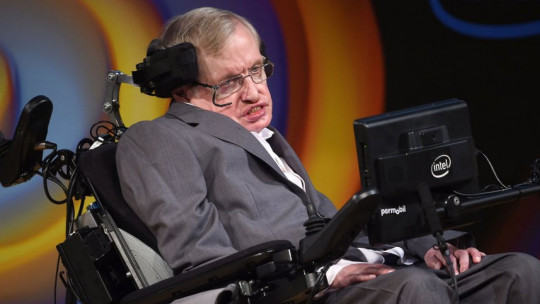Language is one of the most important capabilities of the human being, to the point that in ancient times it was considered one of the main factors that identified us as human beings.
Communicating, expressing what we think and feel, and the various uses that can be given to said communication, is something that is partly innate, but it must be trained throughout our lives. But sometimes different problems may appear that either mean that said acquisition is not carried out correctly or that it is lost for some reason. Thus, we can identify different types of language disorders In this article we are going to see some of the main ones.
Language disorders
Language disorders are understood as all those difficulty or absence in understanding, expressing or repeating language in its different aspects that generate problems in the subject’s adaptation to the environment and/or significant discomfort. These problems can arise during the period in which the skill is acquired and enhanced, or as a loss of the skill already acquired.
Although we generally identify language with speech, and in fact this is an important part of language, we must keep in mind that in the latter also paraverbal components such as tone, adaptation to context or fluency participate and non-verbal such as gestures and mimicry.
Based on what has been said, we can see that there are multiple problems that can arise in any of these areas, with different types of language disorders existing.
Main types of language disorders
Below we briefly review some of the most common and well-known language disorders. In this review we include both oral and written language disorders and both comprehension and production
However, although they affect communication, those that are not limited to this area are not properly considered language disorders, such as selective mutism (which is a problem of anxiety and not language, which is perfectly preserved). Other disorders such as autism are also not included within language disorders, although in this case they do have language difficulties (some of them included in the disorders that follow).
1. Language disorder
Formerly known as Specific Language Disorder or SLI, the language disorder is characterized by the presence of problems in the understanding and/or expression of language in subjects with intellectual abilities typical of subjects of the same age, so said problems would not be consequence of an intellectual disability.
Grammatical structure and lexicon are affected the speech generally being less verbose and more limited than usual.
2. Functional dyslalia or phonological disorder
Phonological disorder, formerly known as dyslalia, is an oral language problem in which difficulties occur in articulation, making the language somewhat incomprehensible and limiting social participation. He cannot correctly make certain sounds, and usually makes substitutions, transformations and omissions of these. The phonological disorder cannot be due to organic causes, which equates it to the old functional dyslalia.
3. Dysarthria
Dysarthria is considered to be that difficulty in articulating language. produced by a brain alteration or located in the nerve fibers that regulate the articulation and production of language. It is considered a type of organic dyslalia.
4. Dyglossia
Dysglosia is an organic dyslalia produced by morphological alterations that prevent or hinder the normal use of language and correct pronunciation. An example is found in people with cleft lip or facial malformations. Also It is considered a type of organic dyslalia
5. Fluency disorder or dysphemia
Also known as stuttering, it is a relatively common problem in childhood, although in some cases it becomes chronic. The main problem is found in the difficulties in the fluency with which speech is produced, especially accentuated in the presence of an audience.
In his speech, the subject suffers from different blockages that interrupt the usual rhythm of speech, be it a sudden one at the beginning of a word, several small spasms throughout a word or phrase, or a mixture of both. They usually generate great anxiety and sometimes avoidance.
6. Social communication disorder
Also called pragmatic communication disorder, it is based on the existence of difficulties when using language in a way appropriate to the context. There are no problems in comprehension or delivery, but there are problems in using the correct language at the right time.
It is common for the subject not to understand why in certain contexts using one language or another is more or less appropriate, that there are difficulties understanding metaphors and analogies, look for second meanings or find different ways to express the same idea, the language generally being literal. Likewise, it not only happens with oral language, but also with gestural language.
This symptomatology It is common in subjects with autism and Asperger’s
7. Aphasias and dysphasias
Aphasias are all those alterations in which the loss or difficulty occurs in producing, understanding or repeating language due to the existence of a brain injury, said ability being already acquired previously and the deficits occurring only afterwards.
Its childhood equivalent is dysphasia, in which these problems occur due to an ability that has not yet been consolidated and that often cannot fully develop due to brain injury In the latter case, it is sometimes difficult to differentiate from other problems, since there is no fixed baseline with respect to language ability: the child has not yet learned or has not yet learned to communicate.
Within this group of disorders there are many variants, depending on the injured area and the effect it has on communication and language.
8. Dyslexia and alexia
One of the best-known language disorders, but in this case written language. Dyslexia is the difficulty in reading and writing in which the subject has problems understanding what you read or performing the action of reading The letters are mixed and substitutions, omissions and translations are made, reading is slowed down and there are generally difficulties in understanding what is read.
Dyslexia can be superficial (in which there are problems when reading the words globally), phonological (in which the person has difficulty reading by associating the pagraph with its equivalent in the form of a phoneme, which means that it is only read from the form of the word) or deep (a mixture of the previous two, which appears together with semantic problems).
Alexia involves the total inability to perform this skill due to a brain injury.
9. Hyperlexia
This problem is characterized by a strong ability to read quickly, but usually with little comprehension and retention of read material.
10. Dysgraphia and agraphia
Dysgraphia is understood as the difficulty in producing written language, with problems when encoding and generating letters, words or phrases. There are problems in the ability to organize the writing space, copying difficulties, motor problems at the level of using a pencil and other similar skills, problems translating thoughts and messages into written language, spell in writing, use different fonts and spelling among others. It would be the equivalent of dyslexia but at the production level.
As for agraphia, it refers to the inability to perform these skills resulting from a brain injury in adults.
11. Dysorthography
A problem in which the main deficit occurs when correctly writing the content of the message that we want to produce. Sometimes also called dyslexic dysgraphia errors occur in writing that affect the correct layout of the spellings according to spelling rules.
12. Glossolalia
Use of an invented language by the subject, being incomprehensible to listeners in which new terms are generated while there is agrammatism.
13. Tachyphemia
Speech disorder in which the subject speaks excessively quickly, to the point that a leakage of words and continuous errors derived from the great speed at which one speaks.
14. Mimic disorders
Although they are not generally considered language disorders, the truth is that at the level of non-verbal language, Mimicry can be a fundamental element of communication Dysmimia supposes the lack of cohesion between what is expressed and what is thought or felt. Hypomimia is the presence of a reduced number of movements and amimia is the absence of expression through movement. On the contrary, hypermimics are exaggerated expressions of movements.











